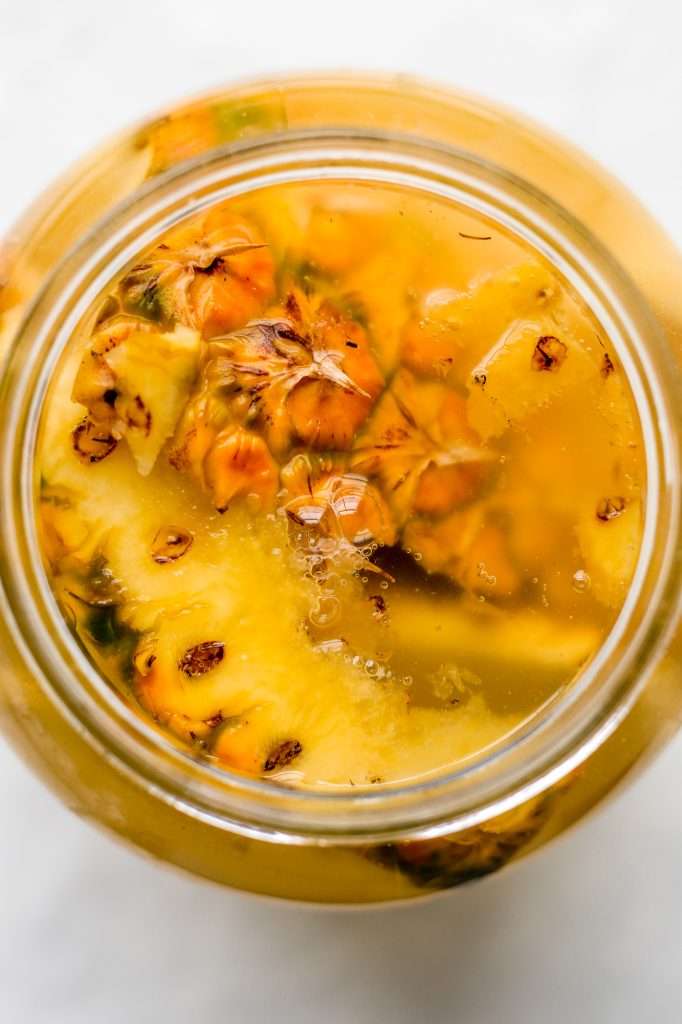- 6 cups ripe, organic pineapple scraps* chopped
- 255 grams of organic cane sugar
- Water
- 3 tablespoons raw vinegar with the mother*
- 1 gallon glass jar
- cloth covering
- rubber band
- Please read the recipe notes.
- Wash the pineapple rind well with warm water. Chop the pineapple scraps into chunks.
- Add the sugar and pineapple to a 1-gallon glass jar.
- Add water to the jar until full.
- Add in a few tablespoons of raw vinegar with the mother. This is your starter culture and helps establish a good microbial community (see notes below)
- Stir the mixture until all the sugar is dissolved.
- Place a cloth lid on the jar and secure with a rubber band.
- Stir the mixture once or twice a day and allow to ferment at room temperature for three weeks. Don’t forget to stir it. I like to just do it first thing in the morning each day.
- You should notice the mixture bubble within one week.
- After three weeks of fermentation, strain out all the pineapple pieces, replace the cloth lid and allow the mixture to ferment for 6 more weeks.
- You will notice a vinegar mother form on the surface (it looks like a kombucha SCOBY but is very light in color). You can keep this to start your next batch of vinegar.
- After fermentation, bottle the vinegar and seal it with a solid lid. Store at room temperature in your pantry.


